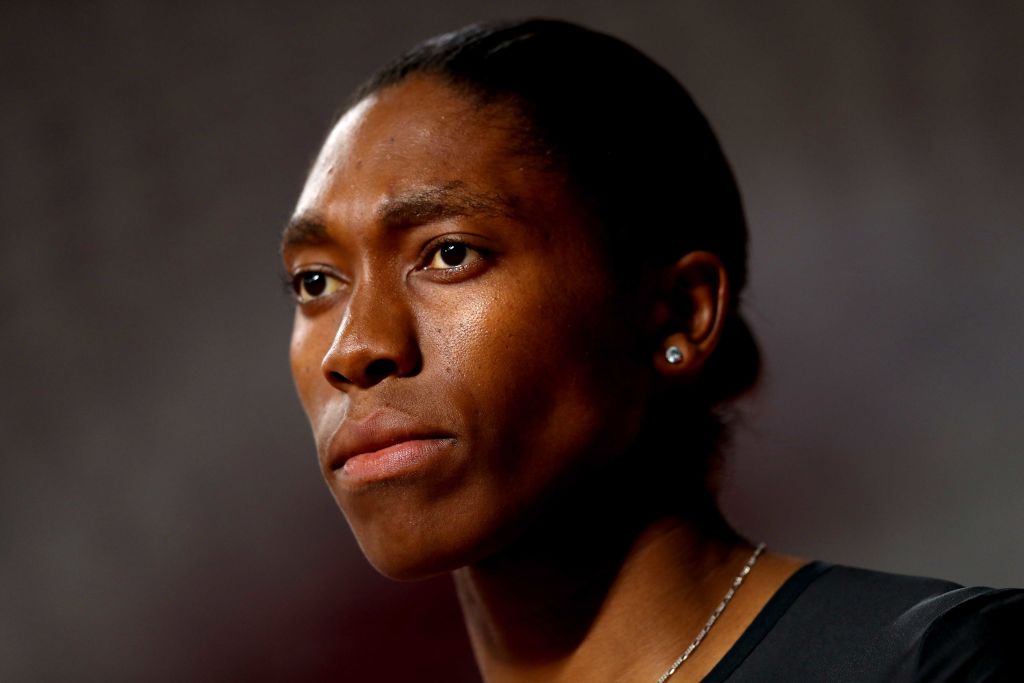Was the Caster Semenya ruling fair? It’s an emotional case that has sparked debate across the world. Born with a disorder of sex development (DSD), the South African runner was raised female and has never thought of herself as anything else. But on Wednesday, the Court of Arbitration for Sport (CAS) ruled to uphold the International Association of Athletics Federation’s (IAAF) regulations for female athletes with DSDs. In order to compete in the women’s category, the court decided, Semenya must take drugs to lower her testosterone levels.
Whichever way you look it – and there are a lot of ways of looking at it – it’s a no-win situation. Sports is divided into two divisions, male and female, to reflect the two sex categories that most of us fall neatly into. For a small number of people, however, this binary is less straightforward.
Though the two-time Olympic champion at 800m has never disclosed the results of her sex tests, the CAS statement made clear that she has 46XY DSD: i.e. male chromosomes. This condition is so rare that Semenya says, convincingly, that the IAAF official rules on athletes with DSDs were designed with her in mind.
On the one hand, it’s understandable that many see the verdict as, in the words of the tennis star Martina Navratilova, ‘dreadfully unfair to her and wrong in principle.’ Semenya’s achievements were attained without her making any choice or taking any intervention that would give her an unfair advantage.
On the other hand, fairness to Semenya needs to be tempered with fairness to her female (XX) competitors. Semenya’s advantages may be natural, but they are owing partly to her male sex characteristics. For instance, individuals with 46XY DSD have testosterone levels well within the male range (7.7 to 29.4 nmol/L; where the normal female range is below 2 nmol/L). And as Doriane Lambelet Coleman, a law professor and former 800m athlete, explains:
‘[Testosterone is] the best single physiological marker for sport’s purposes. That’s because the primary reason for the sex differences in the physical attributes that contribute to elite athletic performance is exposure to much higher levels of testosterone during male pubertal growth. Those physical attributes include power generation, aerobic power, body composition and fuel utilization. Compared to females, males have greater lean body mass (more skeletal muscle and less fat), larger hearts (both in absolute terms and scaled to lean body mass), higher cardiac outputs, larger hemoglobin mass, larger VO2 max (i.e. a person’s ability to take in oxygen), greater glycogen utilization, and higher anaerobic capacity. The result of this differential is the performance gap between males and females that justifies the existence of a women’s category in competitive sports. That gap typically extends to 10-12 percent. Without an eligibility rule based in sex-linked traits, we wouldn’t see female bodies on any podium.’
Semenya’s case, and the surrounding debate, is especially fraught since it occurs amid an ongoing debacle about whether transgender women (males who identify as females) should be allowed to compete in women’s sports. In upholding the IAAF regulations, the CAS is setting a precedent for one of the most fraught questions of the modern sporting world: When it comes to women’s sports, who counts as a woman?
In the transgender debate a woman might be (1) a person whose genetic make-up is objectively and unambiguously female or (2) a person who identifies as such. But in the DSD debate, there is a suggested third option. A woman may be someone who, as the result of unusual biological makeup, has some male sex characteristics, but complies to a universally applied female-sex marker.
The sex-marker the CAS has picked is testosterone. This aims to resolve the advantages caused by hyperandrogenism – an excessive level of natural steroids which research suggests is performance enhancing – in cases of 46XY DSD. But, of course, there are limits to how much the physiological advantages of testosterone can be reversed. As Coleman explains, males’ testosterone laden advantages begin in utero and are amplified by puberty. This is why some people would rather see a female category (for XX females) and an open category for men and everyone else.
Female athletes need to get together & present a case to CAS that we want XX opportunities to be equal to male XY opportunities in sport. Biological Female human rights 2a level playing field Medals, sponsorships, Grand Prix race money & commercial contracts for XX athletes
— Sharron Davies MBE (@sharrond62) May 5, 2019
The CAS has, in this case, aimed to preserve the distinction in men and women’s sports in way that also makes it possible for women with XY disorders of sex development to be able to compete in the female category. At a time when the very idea of women’s sports is under threat, this is a common sense compromise.
This article was originally published on The Spectator’s UK website.


















